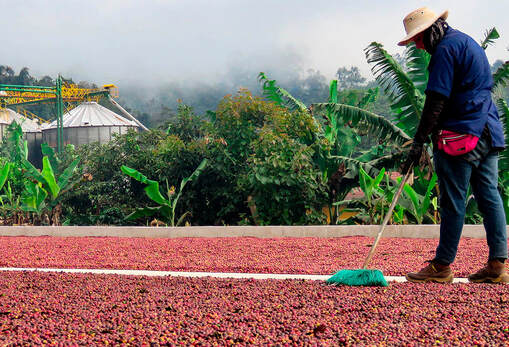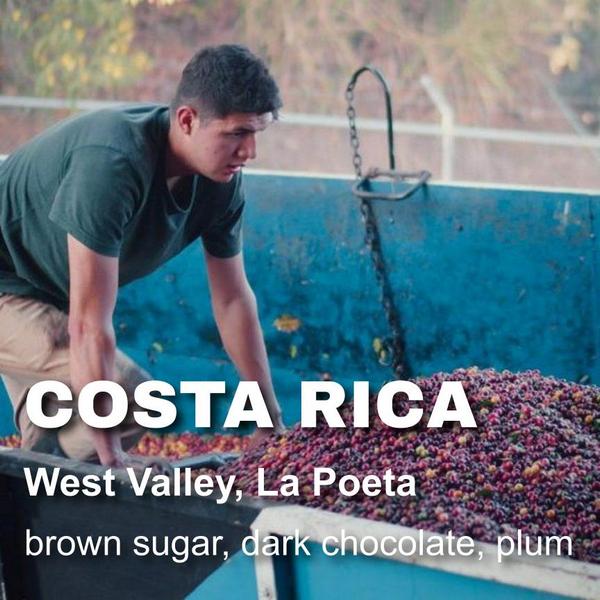- NOW IN STOCK!
- >
- Costa Rica
Costa Rica
SKU:
$6.25
6.25
126
$6.25 - $126.00
Unavailable
per item
Small family farmer group, sustainably grown and traded
About the coffee
- Cupping notes: Great acidity and body, mild sweetness, notes of brown sugar, dark chocolate, and plum
- Cultivation: shade-grown among trees in rich, volcanic soil in the mountainous region of the West Valley of Costa Rica
- Altitude: 3,600 feet
- Tree type: Caturra, Catuai
- Preparation: hand-picked, fully washed, sun-dried on patios
About the people who grow it
 Top: preparing coffee cherry for further processing; Bottom: coffee drying floor.
Top: preparing coffee cherry for further processing; Bottom: coffee drying floor.Photos by CoopeTarrazú.
"El Poeta" is sourced from family-owned farms located near San Rafael de San Ramon within the province of Alajuela, Costa Rica. Producers collaborate with an export and milling company called Cafe de Altura de San Ramon Especial to gain access to technical support for best agricultural practices. This partnership has helped to improve quality, increase earnings from coffee sales, and strengthen family livelihoods.
The West Valley coffee region of Costa Rica is ideal due to microclimates and the possibility of harvesting the ripe coffee cherry during the summer. The morning sun, the afternoon rain, volcanic soils and high frost-less elevations makes for coffee growing heaven! This West Valley region is westernmost of Costa Rica’s coffee growing areas, and produces almost 25% of Costa Rica’s total coffee output. Many Cup of Excellence winners have been from this region.
The West Valley coffee region of Costa Rica is ideal due to microclimates and the possibility of harvesting the ripe coffee cherry during the summer. The morning sun, the afternoon rain, volcanic soils and high frost-less elevations makes for coffee growing heaven! This West Valley region is westernmost of Costa Rica’s coffee growing areas, and produces almost 25% of Costa Rica’s total coffee output. Many Cup of Excellence winners have been from this region.
